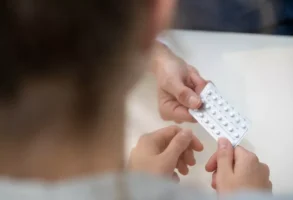
Published September 10, 2023
On September 29, 1952, the D.C. Armory—capable of accommodating an audience of 10,000 and the site of numerous inaugural balls—hosted a different kind of event: a celebration of a new translation of the Bible, the Revised Standard Version (RSV), which had just been completed and was intended to replace the revered King James Version (KJV). The first copy of the RSV had been given to President Harry Truman three days earlier, but it was Truman’s secretary of state, Dean Acheson, who was the principal speaker at the Armory event. The son of the late Episcopalian bishop of Connecticut did not disappoint, welcoming the new edition while describing in eloquent terms what the King James Bible had meant to American culture and public life
In the earliest days in the Northeast, the Book was All. The settlers came here to live their own reading of it. It was the spiritual guide, the moral and legal code, the political system, the sustenance of life, whether that meant endurance of hardship, the endless struggle against nature, battle with enemies, or the inevitable processes of life and death. And it meant to those who cast the mold of this country something very specific and very clear. It meant that the purpose of man’s journey through this life was to learn and identify his life and effort with the purpose and will of God. … But this … did not exhaust the teachings of this Bible. For it taught also that the fear of God was the love of God and that the love of God was the love of man and the service of man.
Seventy-one years later, it is inconceivable that any such scene might be replicated in 21st-century America, and not just because ours has become a far less biblically literate culture over the past seven decades. Rather, a new biblical translation would be unlikely to generate the great interest displayed in the more than 3,000 events across the country that coincided with the public release of the complete RSV, because new biblical translations have proliferated enormously in the intervening years.
As John Barton notes in his instructive new book, The Word: How We Translate the Bible and Why It Matters, the King James Version was the Bible in the Protestant Anglosphere for centuries, and so a new edition created a major shift in cultural tectonic plates. Yet Barton’s glossary of English-language editions counts over a dozen new translations since the RSV, and that process of continuously re-translating the world’s most translated book seems unlikely to abate anytime soon. Thus, a new biblical translation amid today’s biblical cornucopia would not be a big deal (even if American high culture had not become so biblically ignorant that a reporter, after asking Richard Neuhaus for a comment on some sexual scandal and being told that such shenanigans had been going on “since that unfortunate afternoon in the garden,” could follow up with, “And what garden was that, Father?”).
John Barton—Professor Emeritus of the Interpretation of Holy Scripture at Oxford—does not offer his readers a guide to these various translations, and still less a detailed evaluation of each of them. And indeed, Barton declares his summary position early: “While there can be translations that are simply wrong, there cannot be one that is uniquely right.” Rather, The Word is a thorough mapping (to use the author’s cartographic image) of the translators’ terrain. And that complex landscape is, to simplify, defined by two promontories.
The “formal equivalence” approach to biblical translation strives to bring the original-language source-text to the reader by effecting as close to a word-for-word translation as possible, given the constraints of moving from one language to another. By contrast, the “dynamic equivalence” approach (sometimes called “functional equivalence”) aims to bring the reader to the source-text through a sense-for-sense translation that is less literal but putatively more comprehensible to someone unfamiliar with the cultural environment of the text’s original language. While he carefully explores the pros and cons of both approaches, to each of which he devotes an orienting chapter, it seems that professor Barton’s preference is to lean toward “formal equivalence.” He has, for example, no use for J.B. Phillips’s “dynamic equivalence” rendering of “Friend, go up higher” (Luke 14:10) in The New Testament in Modern English as “My dear fellow, we have a much better seat for you,” or for Phillips’s translation of the “holy kiss” enjoined by St. Paul in Romans 16:16 as “a hearty handshake all around.”
Still, throughout this erudite and even-tempered book, Barton is happy to give credit where credit is due when the translation in question succeeds in both bringing the source-text to the reader and the reader to the source-text. Thus he praises the KJV’s familiar rendering of Luke’s infancy narrative (“And there were in the same country shepherds abiding in the field, keeping watch over their flocks by night…” from Luke 2:8ff) as a “formal-equivalence, almost word-for-word version … [that] captures the rhythm and clarity of the [Greek] original in real English.” Yet he can also congratulate the much-criticized New English Bible (deplored by T.S. Eliot for its “combination of the vulgar, the trivial and the pedantic”) as “both modern and true to the original” in its rendering of “the quintessential lament in the Hebrew Bible”:
I am the man who has known affliction,
I have felt the rod of his wrath.
It was I whom he led away and left to walk
in darkness, where no light is.
Against me alone he has turned his hand,
and so it is all day long.
He has wasted away my flesh and my skin
and broken all my bones;
He has built up walls around me,
behind and before,
and has cast me into a place of darkness
like a man long dead.
He has walled me in so that I cannot escape,
and weighed me down with fetters;
even when I cry out and call for help,
he rejects my prayer. (Lamentations 3:1-8)
Thus Barton’s judicious summary in the matter of the two predominant approaches to biblical translation: “the true contrast may not be between functional and formal equivalence, but between those translations that successfully marry source and target so that both are respected, and those that are unbalanced between them.” By that criterion, Barton’s gold standard is Robert Alter’s three-volume translation of the Hebrew Bible (completed in 2018), and, as Barton notes, “if someone could produce something similar for the New Testament … the world would be richer for it.”
The Word gives far more attention to the first half of its subtitle—”How We Translate the Bible”—than to the second half: “And Why It Matters.” The author’s discussion of “Inclusive Language about God” is brief and rather unsatisfactory, and at no point grapples with the question of why, if Jesus called God “Father,” Jesus’ followers have an authority to “correct” him to make God-talk more “inclusive.” It is true that, as Barton notes, we only have Jesus’ words in translation from the original Aramaic to the biblical Greek. But if that Greek text is “canonical”—declared by the Church to be divinely inspired and therefore teaching us what God intended to be taught—then it seems a stretch into heresy to suggest that modern “inclusive language” (itself a dubious, and highly volatile, concept) ought to be preferred to the canonical text. This is no trivial matter, as the Catholic Church has determined that baptism conferred “in the name of the Creator, Redeemer, and Sanctifier”—an inclusive-language trope replacing the biblical “Father, Son, and Holy Spirit” (Matthew 28:19)—is invalid, such that all those baptized using the “inclusive” formula must be baptized again, using the correct trinitarian language of the Bible.
What Barton does have to say about “why it matters” is always instructive, however. The Greek translation of the Hebrew Bible—the Septuagint—deeply influenced the writing of the New Testament both linguistically and theologically. Biblical translations into vernacular languages shaped the various theologies of the various Protestant Reformations, even as those theologies, in turn, influenced the translations. The explosive growth of Christianity in 21st-century sub-Saharan Africa has been profoundly influenced by new biblical translations into indigenous languages.
Ideas, as always, have consequences, and because ideas are formulated and communicated in words, getting the words right—bridging that gap between source-text and reader—does indeed make a considerable difference. Readers of The Word will be grateful to John Barton for explaining just how challenging that task is—and why we should be grateful when it is done well.
George Weigel is Distinguished Senior Fellow of Washington, D.C.’s Ethics and Public Policy Center, where he holds the William E. Simon Chair in Catholic Studies.
George Weigel, Distinguished Senior Fellow of the Ethics and Public Policy Center, is a Catholic theologian and one of America’s leading public intellectuals. He holds EPPC’s William E. Simon Chair in Catholic Studies.










